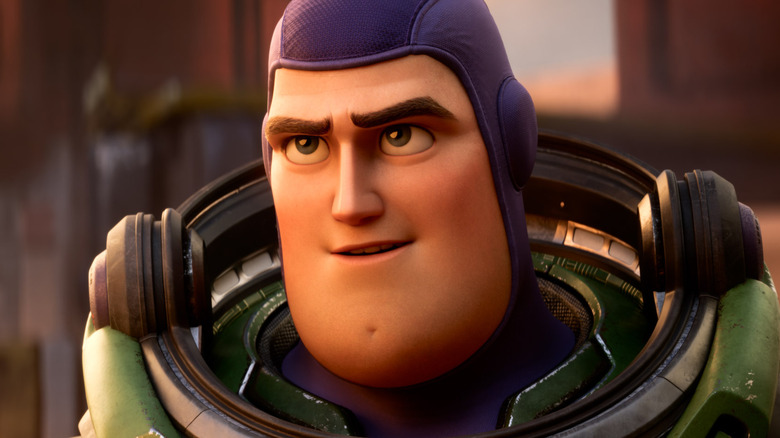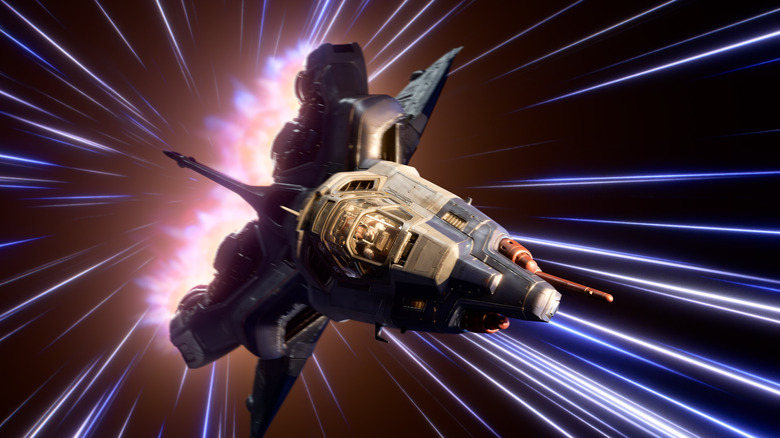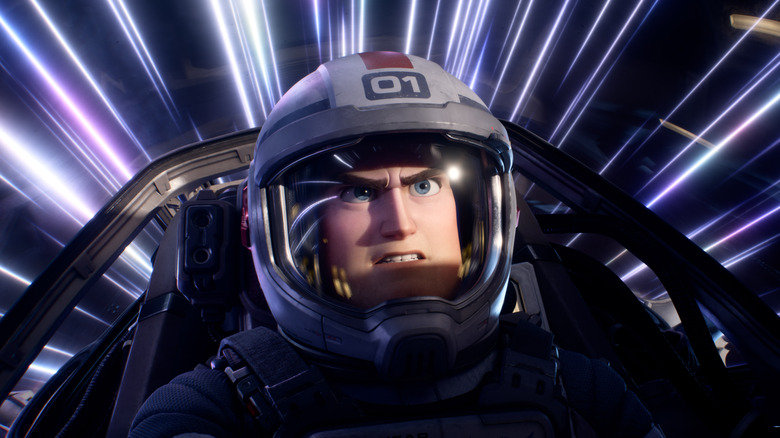Pixar's Galyn Susman And Angus MacLane Reveal What's Changed In Lightyear Since They Began The Movie
The epic "Toy Story" duo Galyn Susman and Angus MacLane are back at it again to bring fans Andy's favorite movie "Lightyear." Screenwriter and director Angus MacLane and producer Galyn Susman are well-known for their work on the "Toy Story" franchise along with a few shorts, but it's about time we saw Buzz Lightyear as more than a toy. Beyond his "To infinity and beyond" catchphrase, who is this guy when he's not shimmying from a toy box? Well, Susman and MacLane have all the answers in "Lightyear," but it took a whole lot longer than fans might expect to iron out the project.
During an early press day presentation for "Lightyear," MacLane revealed that the project took five-and-a-half years to complete. For some thematic context, that's almost Andy's age in the first movie. With a project duration spanning that long, Pixar films go through some changes and tweaks over the years.
With the help of a moderator, Looper asked Susman and MacLane how much the story or other aspects of the film have changed since they began the process all those years ago.
Buzz's evolution
On the evolution of "Lightyear," Susman said, "Well, that is our process. Our process is that we write it, we board it, we put it up on reels, everybody hacks at it, and then you go back and you do it again. We're always evolving our stories up until, you know, even in through production, which is what makes the producer absolutely nuts."
Noting the trials and tribulations of filmmaking, she added, "That is part of our process. It changed. It changed a lot." Buzz Lightyear can't be too different in "Lightyear" than in "Toy Story." Susman clarified, "The core elements, Buzz, hero, who Buzz is, fundamentally, that was all the same. What will be his challenges, what is he going to have to solve, what is going to be his arc? That definitely changed multiple times." The version fans get by the end of the movie may be mildly altered from initial plans, but there's a reason Pixar movies take so long to make — they have to save the best version for last.
Zero gravity
MacLane noted that they played around with time dilation "being somehow nostalgia or a mistake. There was this draw to the past that he would always have." He added, "We knew in the second act he was going to be connected with a group that he was not familiar with and work with. There was [a sense of], we know we want, we need these things."
He elaborated on the film's necessities, explaining, "The obligatory scene for the movie is Buzz fighting Zurg. We knew we needed that. You can build your hand around [these questions]: What's the genre of the film you're working on, what's the expectations, how can you change those things, what will fit within the narrative of the film, and what's enjoyable for the audience to watch?" Through a process of trial and error, as MacLane described, "the root of the movie and what it became is pretty much exactly what we set up to do."
Susman shed some light on another key element the movie needed: Zero gravity. "There's also the stuff we really wanted to have," she said. "It may not be obligatory, but we wanted to fight in zero-G ... We didn't want to make this movie without having a fight in zero-G." MacLane added, "Although once it was a heist in zero-G, we did turn [it] into a fight in zero-G." Does anyone else think Buzz Lightyear is secretly in a '90s boy band called Zero Gs? No?
"Lightyear" opens exclusively in theaters on June 17.


